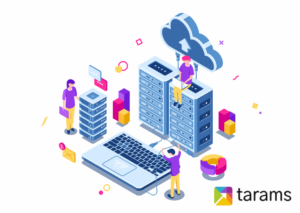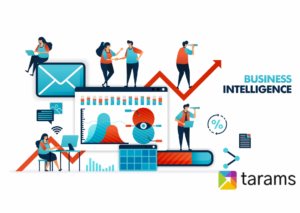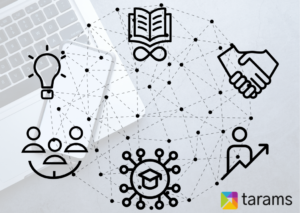2017 was a roller coaster ride for enterprises in technology space. Recent IoT trends were the talk of the town and contributed to numerous transformations across industries. Consumer products such as connected devices and wearables were the bellwethers of these transformations.
The IoT industry size was valued at USD 800 billion in 2014. Technological proliferation and exponential increase in venture investments are expected to boost the global market over the next decade. Significant penetrations of internet and advancement in electronic industry have further propelled the growth of the Internet of Things (IoT) industry and gives a strong visibility to the compelling IoT technology trends in 2018.
The IoT market is expected to touch USD 6 trillion by 2021, at a Compound Annual Growth Rate (CAGR) of 26.9%. With this growth, market will witness new business models & use cases along with immense changes in improved customer experience, productivity & workflow.
Now that, we know IoT will be one of the primary crusaders to drive digital transformation in 2018 and beyond, let’s have a quick sneak peek on the top IoT trends in 2018.
In 2018, enterprises will be looking at the ‘cloud’ not just as a tool, but they will be exploring better ways to use it to accomplish their technology goals
Penetration of cloud technology into enterprise IT had brought remarkable transformations to the business realm in the past , and today cloud technology has opened new ways to maximize big data usage to optimize business revenue cycle management.
Cloud technologycontinues to skyrocket with advanced usage of cloud-based solutions for Analytics, Mobility with streamlined collaboration, IoT, etc., due to its cost-effectiveness and high-speed connectivity. As per IDC, 50% of all IT spending in 2018 will be cloud-based and Deloitte predicts that spending on IT-as-a-Service for data centres, software and services will reach $547 Billion by the end of 2018.
We have compiled a list of cloud trends that businesses need to be prepared for in the coming year.
The Rise of Saas, Paas, and IaaS market
Software as a Service (SaaS), where software applications are centrally hosted on cloud – meant to be licensed on a subscription basis, will rise to 18% CAGR by 2020 as per a survey.
Platform as a Service (PaaS) will be the most rapidly growing service that enables companies to develop, host and manage apps over a common platform that will grow to 52% adoption in 2020, as quoted by KPMG.
Infrastructure as a Service (IaaS) where virtualized computer resources are provided online, will grow with a market size of $17.5 Billion in 2018, as per a report by Statista.
2018 will be a golden year for cloud adoption where collaboration and social media democratization will become seamless and industries will witness exponential growth in adoption.
Cloud to Cloud Connectivity
The market is set to be flocked with multiple providers who are ready to share APIs to multiple cloud solutions and cross-functional applications. Enterprises should be looking forward to not limiting themselves to a single cloud service provider.
With the increase of consumer data inflow from disparate sources, consumers also expect faster data connection from network providers. 2018 will be the year when companies will show strong anticipation to move on to 5G networks.
Faster internet connectivity will compel users to demand fast-loading and high-responsive services and apps. Savvy enterprises will enforce highly responsive SaaS and PaaS in their application portfolio so as to ensure faster delivery that would eventually lead to higher traffic, new revenue generating models and value added service.
And all this becomes possible with embracing cloud-based platforms for products and services that allow businesses to gain agility through virtualization.
Pricing War leads to Vivid Cloud Usage
2018 will witness a growth in the volume of cloud service providers; while on the other hand, the market will display a drop in demand. However, it’s the law of nature- with the increase in supply, demand always goes down! Thus, with increased supply, the market will encounter a rigorous price war. Moreover, numerous providers will offer cloud space for free just to gain valuable consumer data.
Crowd Sourced Platform
Despite using insecure, costly and slow cloud space, users will start using crowdsourced platform to keep the cost low and avail optimum cloud benefits.
Sharing strangers’ and friends’ storage will be a common practice and people will start moving out of applications like DropBox and Google Drive. Similarly, businesses will also look ahead utilize crowdsourced platforms to maintain and build large-scale solutions.
Cloud will be the key to cost containment
Cost containment is a technique to cut down costs to essential expenses to limit within financial budgets. The growth of cloud adoption across the industry will be the main idea for long-term cost-cutting IT strategy by lowering the infrastructure expenses and improving ROI. It is predicted to be a norm in 2018.
Cloud Cost War will be at Pinnacle
Giants like Amazon and Google will be leading the war that actually will have substantial collateral damage to the mid-sized and small-scale service providers. AWS has already announced its lowered prices in the 2017 and Google has introduced its Committed Use Discounts (CUD) which gives the flexibility to the buyer to avail highly reasonable price for a committed use contract.
Cloud to On-Premise Connectivity
Businesses will move on to applications hosted on an on-premise based server while showing affinity towards shifting a chunk of their application portfolio on to the cloud to enable smooth customization and here are the reasons why:
- Although, on-premise deployment will ensure network security when it comes to data flow, numerous contemporary security solutions work best on the cloud.
- Over the years, the enterprise data has expanded at a multiplier level and transferring them on to the cloud remains a tough ordeal for most of the enterprises.
- Complete migration of the entire enterprise data takes a lot of time and does not display any short-term profitability.
Cloud Security Threats
Security concerns will become a major roadblock for numerous businesses to move their data onto a cloud. As per a report by Identity Theft Resource Center (ITRC), USA, 2017 saw 29% rise in security attacks as compared to 2016.
Today, user data is much more vulnerable than ever before, thus even Google brought in its 2-step verification process. As per IDC, global security revenue will grow up to $101.6 Billion in 2020. Another report reveals that security spending will touch $93 Billion in 2018. This will be the year when cybersecurity companies will be on their toes to engineer advance cloud security solutions.
It is predicted that, IT, security and cloud teams will associate to develop new working models to redefine cloud security services to reduce vulnerabilities. By bringing automation, speed, and integration with cloud security services, redefinition on how to approach cloud security for success will be implemented.
Cloud Security Threats
Cloud-based Containerization
Containerization in cloud computing will be implemented by most of the vendors. The phenomena allow the admins to create safe containers on the devices that enable smooth, safe and secure installation and deployment of the application.
Furthermore, cloud solution providers will offer independent container management system that would differentiate their platforms from another cloud container system.
It could reduce the vulnerability of data loss or threat and will be a popular trend in 2018 and beyond.
Cloud and the IoT
IoT as a technology completely depends on the cloud. IoT devices like electronic sensors, home appliances, cars, wearables, etc. communicate and store hefty information. With IoT devices becoming ubiquitous, cloud adoption will be on the rise.
Serverless will gain grounds
The adoption of serverless cloud architecture will enable CIOs to run applications without the burden of on-premise operating servers. Moreover, developers find it convenient to access and extend cloud services when it comes to addressing multiple use cases and application issues.
Serverless cloud architecture also needs less time and effort and simplifies software updates.
Edge computing: the next multibillion-dollar technology
Edge computing will leave no stones unturned, when it comes to operating close to IoT based devices and machinery such as automobiles, home appliances, turbines, industrial controllers, etc. and optimizing the cloud usage. Edge computing will be required to run the real-time services as it operates close to the sources and streamlines the inflow of traffic from these sources. Edge computing is an additional middle layer between the devices and the cloud that keeps the devices away from the centralized cloud computing.
Thus, the public cloud service providers will move towards IoT strategies that will include edge computing as an integral part.
Our Final Verdict
As far as technology advancement is concerned, possibilities are limitless. With evolving IT infrastructure, cloud adoption will be really fast. CIOs will be keen to consider the most advanced offering from the cloud space. However, security concerns will still haunt the CXOs and multiple enterprises will remain deprived of great opportunities.
The market will observe an affinity of enterprises towards hybrid cloud model. A handful of companies may also consider private cloud solution as an option.
At Tarams, we engineer solutions for intuitive visualization of cloud data keeping security and performance as the crux of our cloud-based solutions. Our cloud architects help you to efficiently mine data to develop better analytics, data mining best practices and improve decision making.
We forecast a strong proliferation of cloud technology in the upcoming years and recommend organizations to actively participate in its development, adoption and security.




